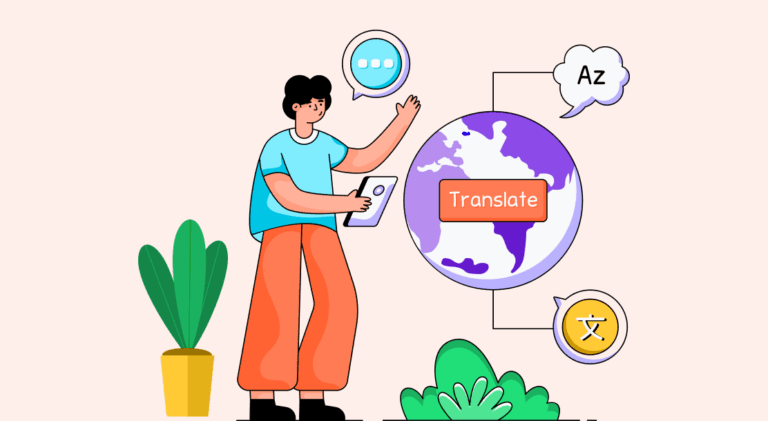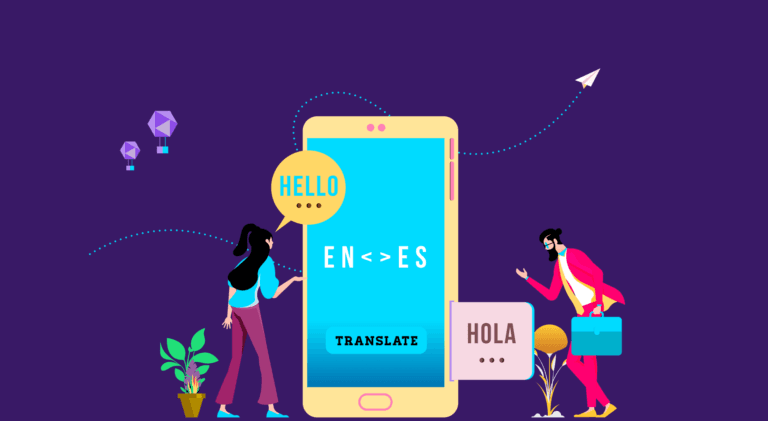
Whether you are a business trying to reach a new audience or an individual with a message to share, blogging is an excellent way to communicate with people worldwide. It is one of the best methods to create awareness about your brand and products. While it offers valuable information to readers, it also helps establish a connection with a new audience.
However, if you restrict yourself to only one language, you miss out on a greater part of the market. If you want to expand the reach of your website, good translations are a must!
Qualities of a Good Translation
Keeping the original author’s voice and style intact when translating a blog post is important. In addition, it is important to ensure that the translation is accurate and that all of the original blog post’s meaning is conveyed.
The English language is a prime example of this, where the meaning and impact of words often need to be communicated through different synonyms.
A good translation will consider the context of the source text and the target audience, as well as the purpose of the translation. It will also be accurate and faithful to the text’s original meaning. A good translation will also be fluent, readable and sound natural in the target language.

Benefits of Blog Translation
If you’re thinking about translating your blog into another language, you may wonder what benefits this can bring. After all, translating a blog takes time and effort, and you may wonder if it’s worth it. Here are some of the benefits of translating your blog:
- Reach a wider audience
Translating your blog into another language can help you grow your audience base by reaching more people. This can help you increase your readership and potentially earn more revenue.
- Connect with new readers
When you translate your blog, you can connect with new readers who may not have been able to read your blog before. This can help you build a stronger connection with your audience and expand your reach.
- Enhance your SEO
Translating your blog can help you enhance your SEO efforts. This is because you’ll create new content that ranks your keywords in other languages.
10 Tips for Blog Translation for Translators
1. Make sure you have a clear understanding of your target audience.
The main purpose of your blog is to connect with them. How will the blog be useful for them? What kind of tone will hit the right note? Take these pointers into consideration while translating.
2. Keep your writing style consistent throughout the blog.
Many writers and translators can lose track, especially for long and information-heavy blogs. Remember that blogs are meant to clarify, not complicate.
3. Use simple, easy-to-understand language.
A good blog translation conveys the message in short sentences that are easy to read. Choose basic words to avoid misinterpretation. Always go for the active voice rather than the passive voice.
4. Avoid idioms and colloquialisms because they often imply a lot of cultural contexts.
While such phrases can be great for establishing a connection with your audience, they can be risky. It’s best to avoid them unless the translator comes with an excellent grip on the language and culture.
5. Use clear and concise sentence structure.
Longer sentences can also lead to misinterpretation in another language. Using too many connectors in a sentence can also make the message unclear.
6. Pay attention to word choice and tone.
This is of utmost importance when you are translating for a new audience. Do your research if you are writing about a new concept. Be careful of the tone, depending on the target language.
7. Use accurate and up-to-date information.
Ensure the timings, locations, and measurements are according to the target audience. Any inconsistency can lead to confusion. Be careful when mentioning prices or large numerals.
8. Edit and proofread your blog post carefully.
Once the translation is complete, go through it and edit it thoroughly. Rectify based on the above pointers and ensure the blog is easily readable in another language.
9. If possible, have someone else check your blog post for errors.
It’s great if you find someone who knows the target language fluently. Having someone else go through the blog will easily help spot and rectify the errors.
10. Always be respectful of your readers.
This is an essential point when you are writing for a new culture or community. You must study the target audience and their culture before a translation. Make sure that the word choice and phrases are not misguiding.
Final Words
Keep the above pointers in mind as you begin blog translations. Whether you need to translate a page or a whole website, ensure that you get a fluent speaker for the same. Hire a good language translator with verified experience or use established translation services. You can hire freelancers from different countries as well.
Good translations are worth investing in if you want to expand your brand’s reach.
FAQs
Ensure the translator or the company is professional and has a good reputation. Ask them to share a sample of their translated work to ensure good quality and experience. You can also ask them about their previous clients and review their projects. Compare the quotes from several different companies before making a decision.
A good translation is one that accurately conveys the meaning of the source text in the target language. A good translation is also faithful to the style and tone of the original text. It is important to remember that a translation is not an exact word-for-word substitution but an adaptation of the original text for the target audience.
Good blog translation can help you reach a wider audience, rank for keywords in other languages, and get more inbound links. This is only possible when you are sure that your translations are high quality and accurately represent your original content. But if you can find a good translation partner, blog translations can be a great way to boost your SEO efforts.
Translations can help your brand grow in several ways. First, it can help you reach new markets that you wouldn’t be able to reach otherwise. Second, it can help build trust with your customers by showing that you’re willing to go the extra mile to communicate with them in their own language. And finally, it can help you better understand your customers by giving insights into how they think and communicate.
Latest Blogs
Explore how Google’s 2025 AI search updates triggered ranking chaos. Learn actionable strategies to adapt your SEO for AI Overviews, zero-click searches, and SERP volatility. Stay ahead now.
Learn how to rank on AI search engines like ChatGPT, Perplexity, and Gemini by optimizing your content for authority, structure, and relevance. Stay ahead in AI-driven search with this strategic guide.
Explore the best healthcare SEO services for your medical practice. Improve online visibility and effectively reach more patients in need of your services.
Get your hands on the latest news!
Similar Posts

Translation
5 mins read
All You Need to Know About Language Translation and Terminology Management

Translation
5 mins read
6 Reasons to Translate Content into German

Translation
5 mins read